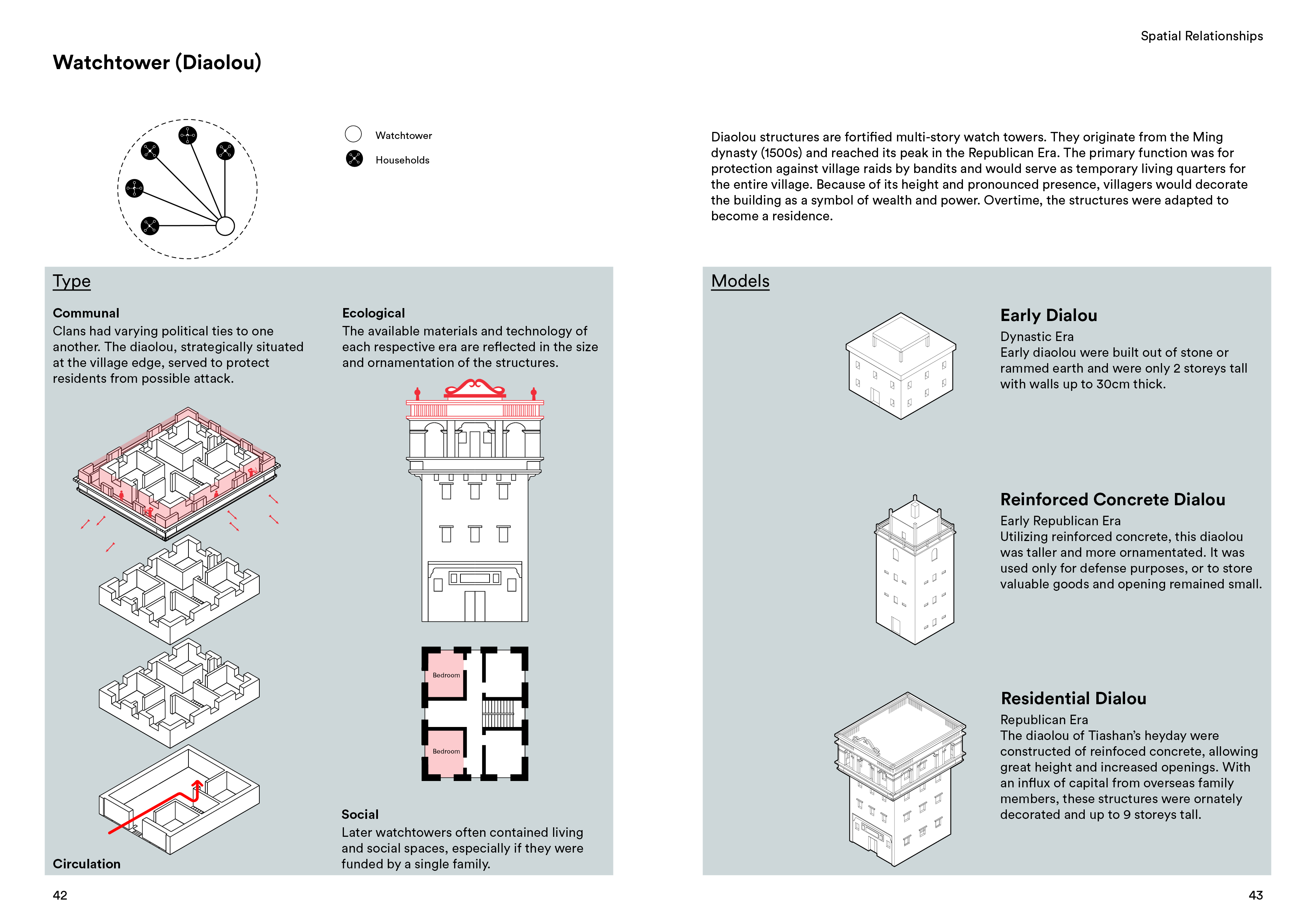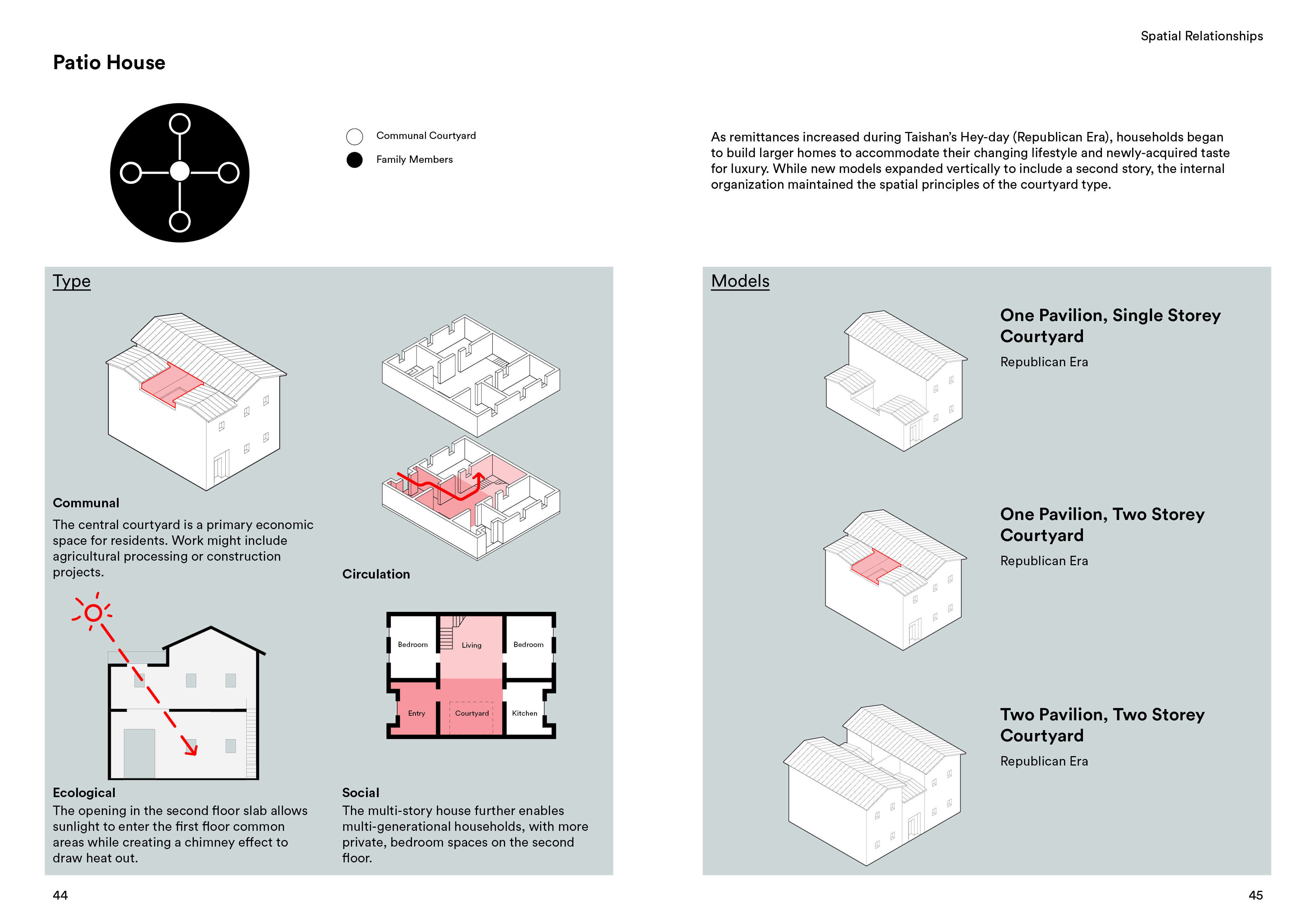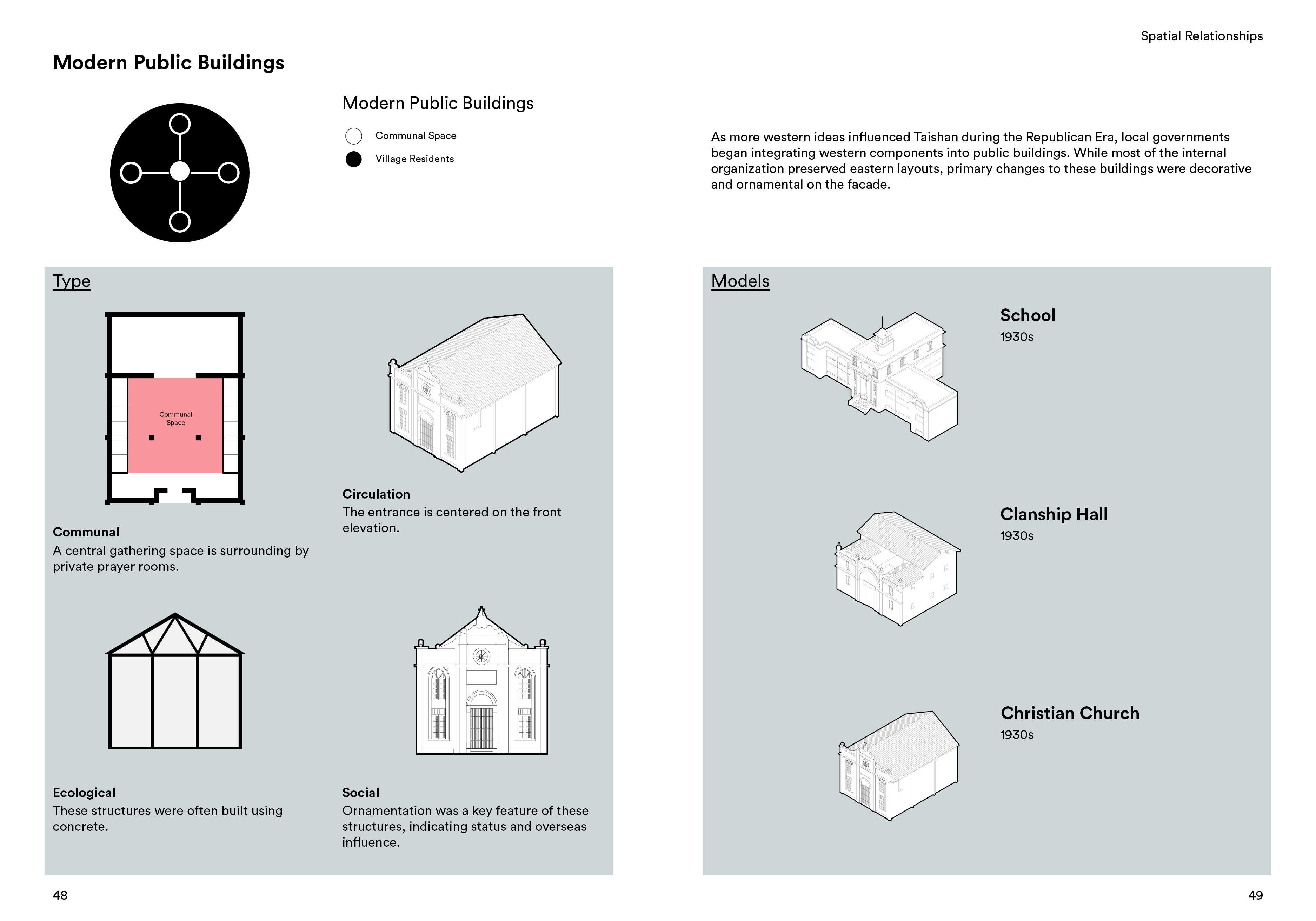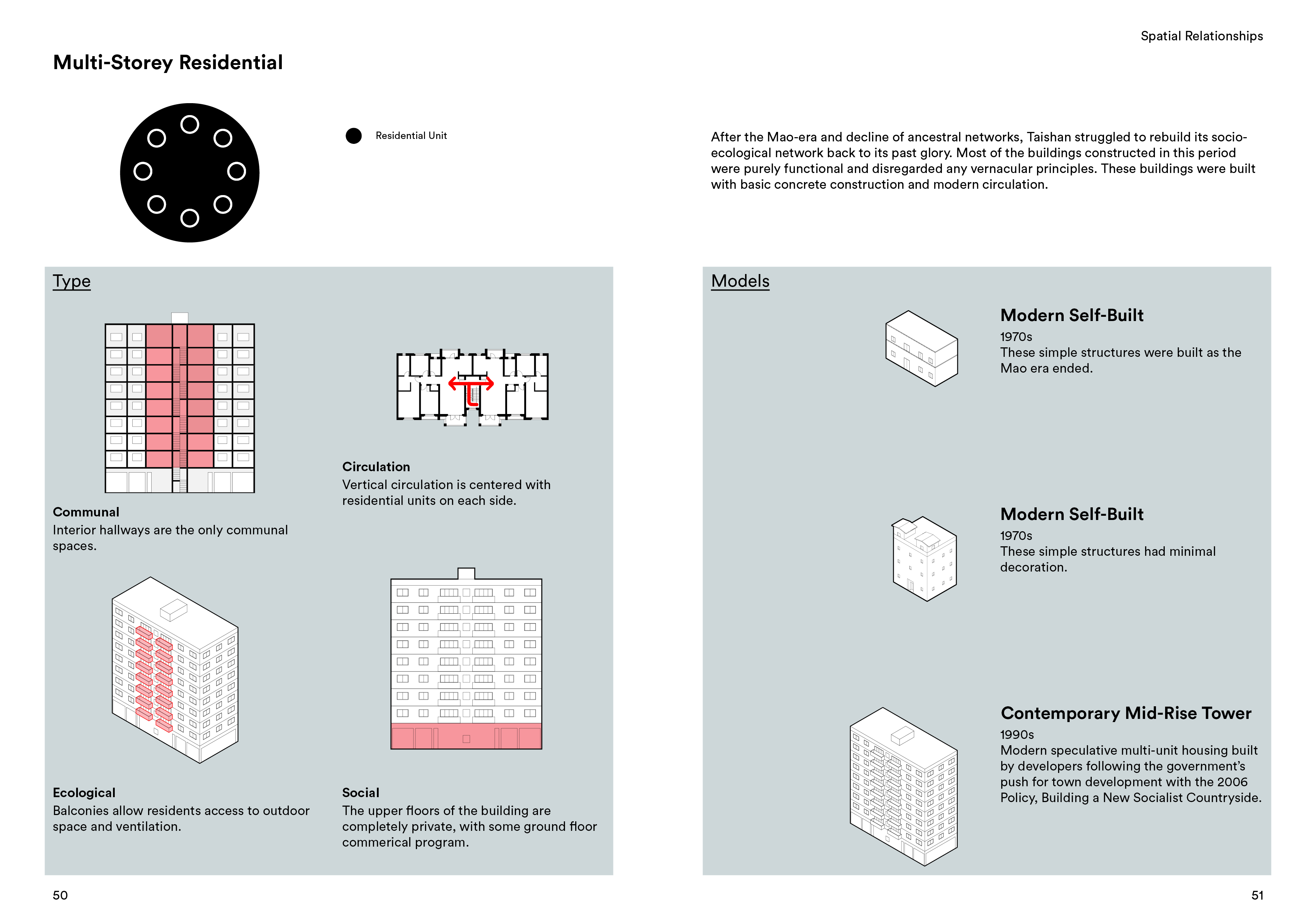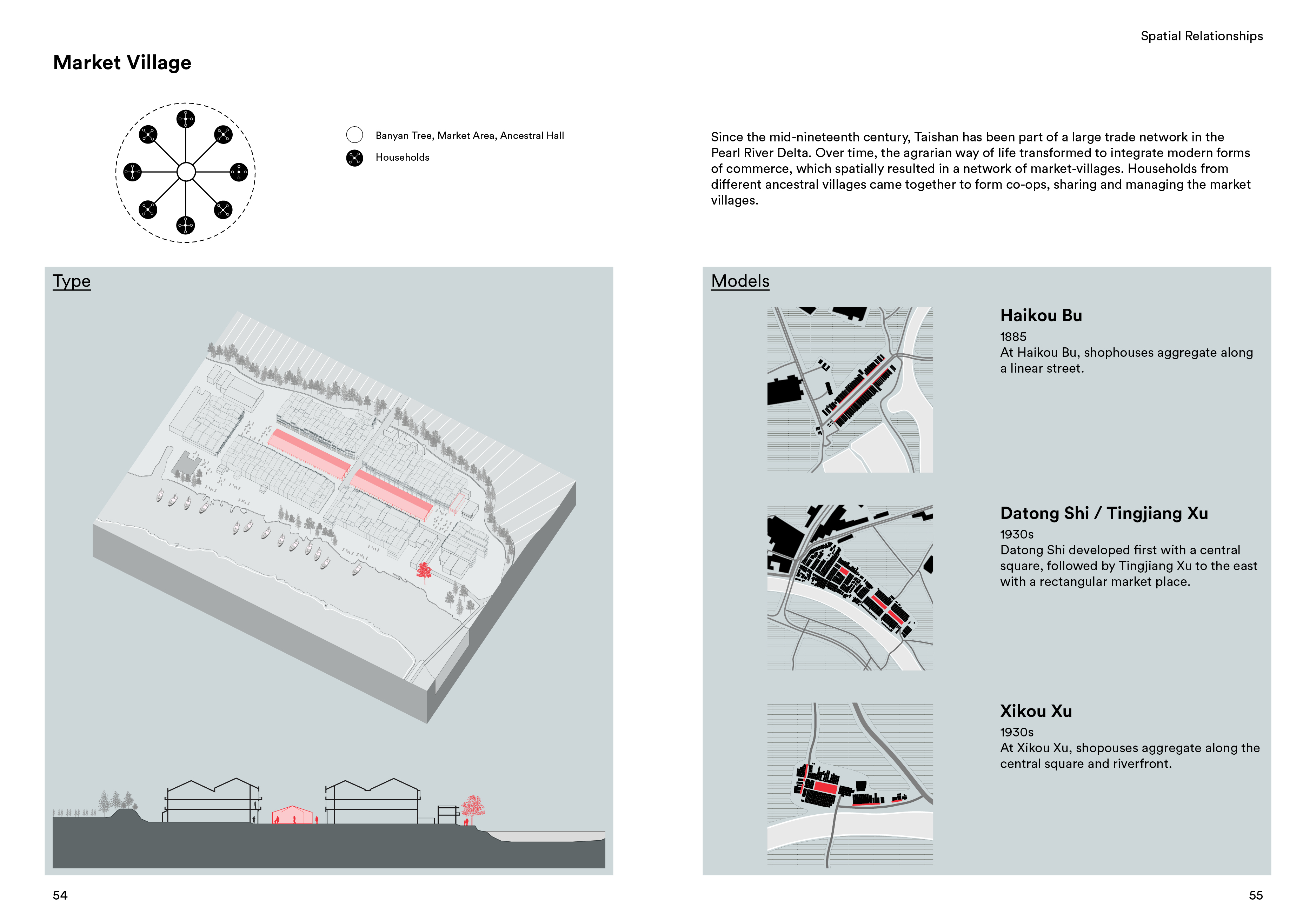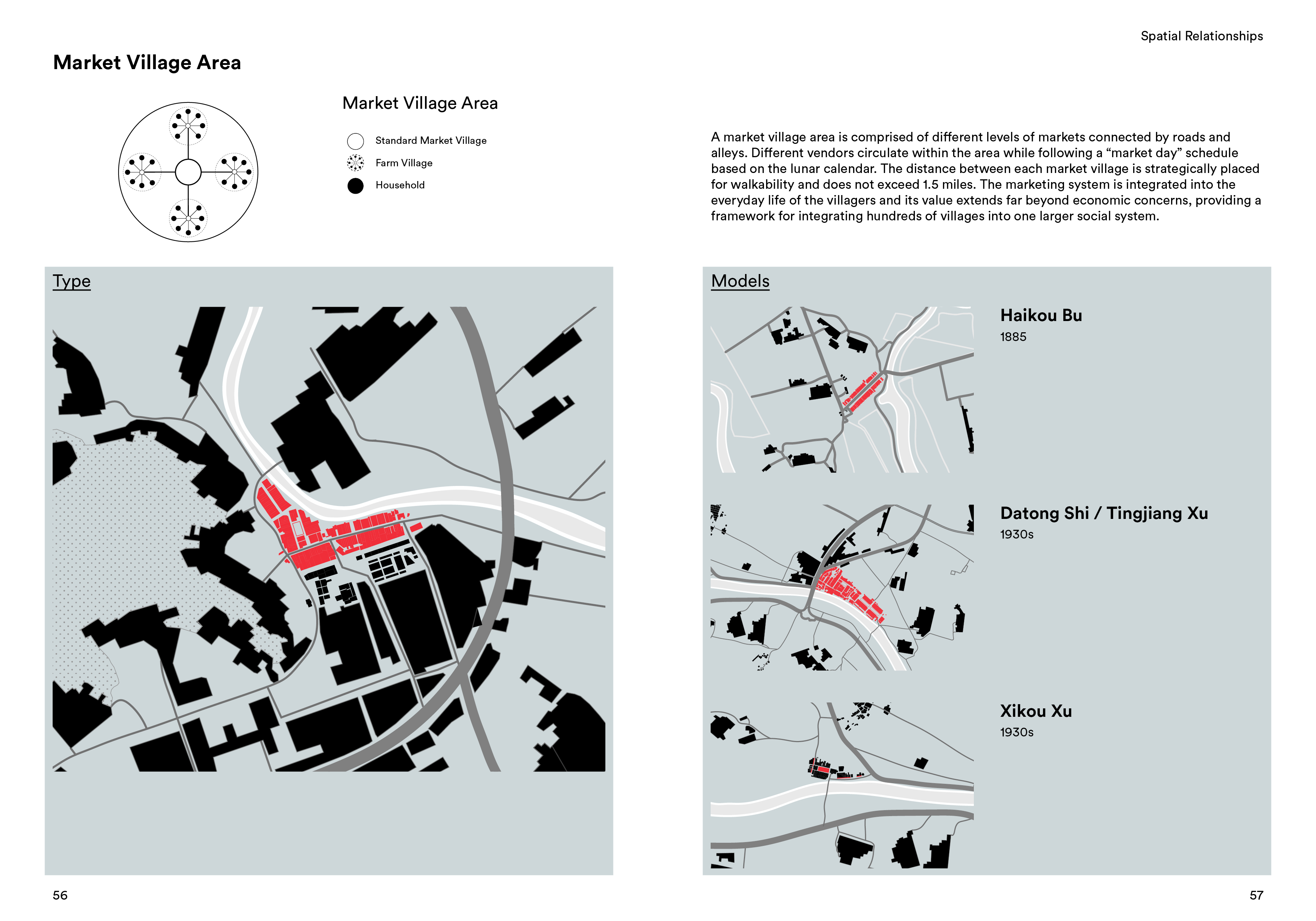空间政治
Examining the history of Taishan’s urban form is critical to contextualizing the county’s present and rapidly approaching future, as current forces overlay onto this historic spatial landscape. At each of the five scales identified in this research, basic types and subsequent models are identified. Types are distinct formal elements that serve as a basis for various iterative models, which diverge to accommodate specific uses or utilize new technologies. Though they vary greatly in scale, program, and ornament, models retain their type’s core spatial principles.
Four factors - political, economic, social, and environmental - most significantly influence urban and architectural form. Each factor’s presence and intensity varies depending on scale and era. Political factors are those which involve governance structures, while economic factors refer to integration with trading and production systems. Social factors explore residents’ relationship to one another, and ecological factors refer to the influence of natural systems. These settlements developed under dynastic rule with a strong emphasis on each element. More recently, political and economic factors have eclipsed social and ecological ones, resulting in spaces that often disconnect residents from one another and natural systems. This research seeks to serve as a basis for design practices that re-center social and ecological considerations.
为了准确且切合时势地对台山的转型进行设想,研究台山现有的城市形态是不容忽视的重要环节。本研究涵括了五个不同尺度的空间调研,将识别各尺度的基础模型和发展模式。尽管五个尺度横跨了省至具体乡镇,包含了多样的项目,但这里归纳出的模型仍保留了此类型的核心原则,具有代表性和借鉴性。该调研的成果会成为后续设计过程中选择不同手段和策略的重要影响因素。
Four factors - political, economic, social, and environmental - most significantly influence urban and architectural form. Each factor’s presence and intensity varies depending on scale and era. Political factors are those which involve governance structures, while economic factors refer to integration with trading and production systems. Social factors explore residents’ relationship to one another, and ecological factors refer to the influence of natural systems. These settlements developed under dynastic rule with a strong emphasis on each element. More recently, political and economic factors have eclipsed social and ecological ones, resulting in spaces that often disconnect residents from one another and natural systems. This research seeks to serve as a basis for design practices that re-center social and ecological considerations.
为了准确且切合时势地对台山的转型进行设想,研究台山现有的城市形态是不容忽视的重要环节。本研究涵括了五个不同尺度的空间调研,将识别各尺度的基础模型和发展模式。尽管五个尺度横跨了省至具体乡镇,包含了多样的项目,但这里归纳出的模型仍保留了此类型的核心原则,具有代表性和借鉴性。该调研的成果会成为后续设计过程中选择不同手段和策略的重要影响因素。


